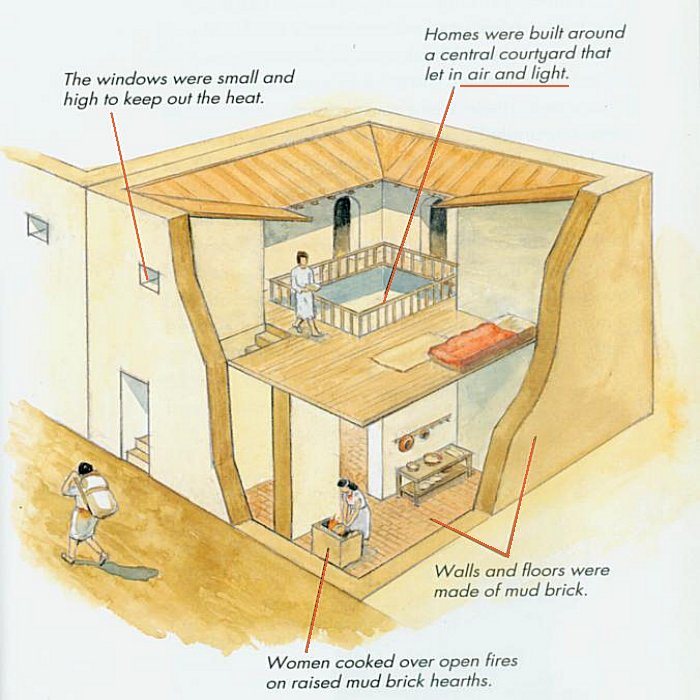What Did Houses For Ordinary People In Sumer Look Like?
A. Sutherland - AncientPages.com - When the Sumerian civilization began to flourish, also daily life in Mesopotamia began to change.
New cities and large towns created new possibilities for people who lived in small villages and were only occupied with haunting and farming.
Most houses (approximately 90 square meters) had a square center room with other rooms built around an area that provided access to the light and ventilated the interior.
People in Sumer were divided into three social classes. The upper class included the richest and most influential people such as kings, priests, and government officials. The middle class of the Sumerian society included artisans (skilled workers making metal products, weapons, pottery, or cloth), farmers, fishermen, merchants, and traders, who traveled much to other neighboring towns to trade wheat, tools, and barley for copper.
The lower class included enslaved people who were captured, then sold and bought among the upper class; they worked in temples and on farms.
Sumerians built their houses by themselves
The average house was a small one-story structure made of mud-brick. It contained several rooms grouped around a courtyard. People with more resources probably lived in two-story houses, which were plastered and whitewashed and had about ten or even twelve rooms, equipped with wooden doors, although wood was not common in some cities of Sumer.
The ground floor in two-story houses usually consisted of a reception room, kitchen, and toilet, and servant’s quarters.
Most houses (approximately 90 square meters) had a square center room with other rooms built around an area that provided access to the light and ventilated the interior. Light in the home was provided by small lamps fueled by sesame seed oil.
While wealthy people built their houses of sun-dried bricks, other people had only means for construction reeds.
A hearth, placed in the courtyard or in a separate room, was an important part of the house. The windows (often in more expensive houses) were very small and placed at high altitudes. They efficiently isolated the interior of the house from the outdoor heat.
Among basic furniture in the Sumerian house, there were low tables, beds with wooden frames, and high-backed chairs and kitchens with household vessels; there were also baskets and chests made of reed. Walls and floors were often covered with reed mats and skim rugs.
Those who could not afford to buy comfortable, luxurious beds and chairs enjoyed sleeping on mats of woven straw or reeds, which covered the floor of the house.
Under the floor of the house, there was sometimes a family mausoleum where the dead family members were buried. However, there also seem to have been special cemeteries for the dead located outside the cities.
Reed houses were also built
While wealthy people built their houses of sun-dried bricks, other people had only means for construction reeds.
Sumer had no trees for timber but it had the huge reeds in the marshes, and this raw material was widely used in the building of reed houses.
People tied reed bundles or plaited them into mats and set vertically in the ground, like columns, in two parallel rows, and then their peaks were tied.
Stephen Bertman writes in "Handbook to Life in Ancient Mesopotamia":
"Digging a series of holes in the ground, the builders would insert a tall bundle of reeds in each hole. A circle of holes would be used to make a circular house; two parallel rows to make a rectangular one. Once the bundles were all firmly inserted, the ones opposite each other would be bent over and tied at the top to form a roof. For a front or back door, a reed mat would be draped over an opening (either at the ends of a rectangular house, or on the side of a circular one).
Such primitive homes are still made and used by the marsh-dwellers of southern Iraq. In a hot climate like Iraq’s, a well-designed house must protect its dwellers from the sun’s searing heat. The reed houses accomplished this purpose by providing shade. In addition, the thick bundles of reeds provided some insulation. If the house was rectangular and there was an opening at either end, its owners may have enjoyed cross-ventilation as well..."
All humans, no matter their wealth or rank have preserved a very beautiful tradition: gathering at the table for the evening meal. This tradition still continues.
Written by – A. Sutherland - AncientPages.com Senior Staff Writer
Copyright © AncientPages.com All rights reserved. This material may not be published, broadcast, rewritten or redistributed in whole or part without the express written permission of AncientPages.com
Expand for referencesReferences:
Hunter N. Daily Life in Ancient Sumer
Bertman S. Handbook to Life in Ancient Mesopotamia
More From Ancient Pages
-
 On This Day In History: George Bernard Shaw Died – On Nov 2, 1950
News | Nov 2, 2016
On This Day In History: George Bernard Shaw Died – On Nov 2, 1950
News | Nov 2, 2016 -
 2,ooo-Year-Old Ancient Roman Treasure Found Underwater Of The Coast Of Portofino, Italy
Archaeology | Jan 31, 2019
2,ooo-Year-Old Ancient Roman Treasure Found Underwater Of The Coast Of Portofino, Italy
Archaeology | Jan 31, 2019 -
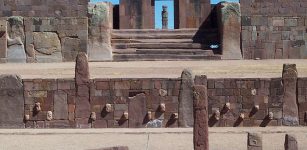 Superfood Of Ancient Andeans Reconstructed – What Helped To Fuel The Tiwanaku Civilization 2,500 Years?
Archaeology | Nov 30, 2021
Superfood Of Ancient Andeans Reconstructed – What Helped To Fuel The Tiwanaku Civilization 2,500 Years?
Archaeology | Nov 30, 2021 -
 Ancient Roman Wine Was Spicy And Smelled Like Toast – Dolia Vessels Reveal
Archaeology | Jan 25, 2024
Ancient Roman Wine Was Spicy And Smelled Like Toast – Dolia Vessels Reveal
Archaeology | Jan 25, 2024 -
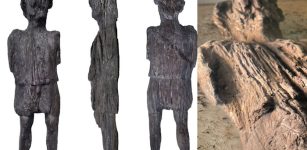 Unexpected Discovery Of Rare Ancient Roman Carved Wooden Figure In Buckinghamshire
Archaeology | Jun 11, 2022
Unexpected Discovery Of Rare Ancient Roman Carved Wooden Figure In Buckinghamshire
Archaeology | Jun 11, 2022 -
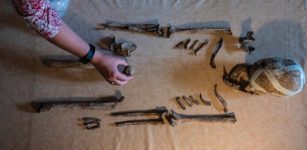 Who Was The The Mysterious Lady Of Bietikow And What Had She In Common With Ötzi Iceman?
Archaeology | Nov 6, 2020
Who Was The The Mysterious Lady Of Bietikow And What Had She In Common With Ötzi Iceman?
Archaeology | Nov 6, 2020 -
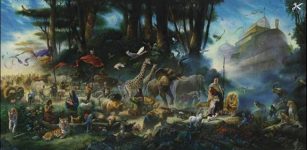 The Great Flood And Noah’s Ark Were Real Events – Scientist Says
Featured Stories | Jun 21, 2014
The Great Flood And Noah’s Ark Were Real Events – Scientist Says
Featured Stories | Jun 21, 2014 -
 Ingvar Vittfarne: Viking Chieftain And His Tragic Expedition To The East
Featured Stories | Jul 21, 2022
Ingvar Vittfarne: Viking Chieftain And His Tragic Expedition To The East
Featured Stories | Jul 21, 2022 -
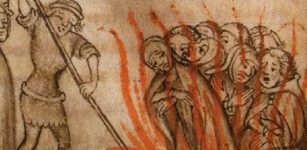 On This Day In History: Knights Templar Arrested – Oct 13, 1307
News | Oct 13, 2015
On This Day In History: Knights Templar Arrested – Oct 13, 1307
News | Oct 13, 2015 -
 Medieval Ship Discovered Off The West Coast Of Sweden May Have Been Attacked By Pirates
Archaeology | Feb 4, 2022
Medieval Ship Discovered Off The West Coast Of Sweden May Have Been Attacked By Pirates
Archaeology | Feb 4, 2022 -
 Lothal – ‘City of Dead’ – One Of The Most Prominent Ancient Places In Danger To Be Forgotten
Featured Stories | Jun 10, 2015
Lothal – ‘City of Dead’ – One Of The Most Prominent Ancient Places In Danger To Be Forgotten
Featured Stories | Jun 10, 2015 -
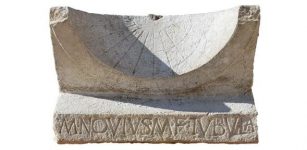 Rare 2,000-Year-Old Intact Sundial With Inscription Discovered In Italy
Archaeology | Nov 9, 2017
Rare 2,000-Year-Old Intact Sundial With Inscription Discovered In Italy
Archaeology | Nov 9, 2017 -
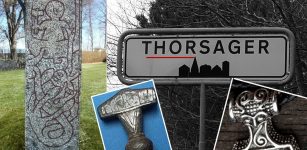 Thor: Brave And Mighty Thunder God In Norse Mythology
Featured Stories | Nov 7, 2016
Thor: Brave And Mighty Thunder God In Norse Mythology
Featured Stories | Nov 7, 2016 -
 Huldra: Seductive Female Creature Living In Forest Or Mountains In Norse Beliefs
Featured Stories | Feb 8, 2018
Huldra: Seductive Female Creature Living In Forest Or Mountains In Norse Beliefs
Featured Stories | Feb 8, 2018 -
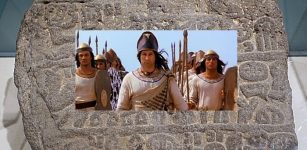 Forgotten Ancient Kingdom Of Tuwana Is Hidden Among Ruins In Cappadocia
Civilizations | Mar 12, 2016
Forgotten Ancient Kingdom Of Tuwana Is Hidden Among Ruins In Cappadocia
Civilizations | Mar 12, 2016 -
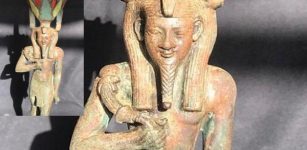 Carved Statue Of God Nefertum Unearthed In Egypt’s Saqqara Necropolis
Archaeology | Oct 3, 2020
Carved Statue Of God Nefertum Unearthed In Egypt’s Saqqara Necropolis
Archaeology | Oct 3, 2020 -
 Oedipus – Tragic Prophecy About A Man Who Couldn’t Escape Fate
Featured Stories | Jan 10, 2019
Oedipus – Tragic Prophecy About A Man Who Couldn’t Escape Fate
Featured Stories | Jan 10, 2019 -
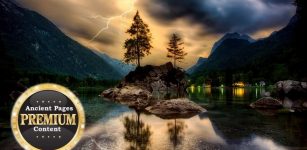 Unexplained Mystery Of The Untraceable Stone-Throwers – Strangeness In North America, Belgium And Indonesia – Part 1
Featured Stories | Nov 11, 2019
Unexplained Mystery Of The Untraceable Stone-Throwers – Strangeness In North America, Belgium And Indonesia – Part 1
Featured Stories | Nov 11, 2019 -
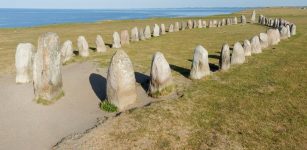 Enigmatic Ale’s Stones – Sweden’s Megalithic Ship-Like Formation
Featured Stories | Jan 17, 2023
Enigmatic Ale’s Stones – Sweden’s Megalithic Ship-Like Formation
Featured Stories | Jan 17, 2023 -
 Anartes: Forgotten Celtic Tribe And The Hercynian Forest With Strange Animals
Civilizations | Jun 14, 2016
Anartes: Forgotten Celtic Tribe And The Hercynian Forest With Strange Animals
Civilizations | Jun 14, 2016

